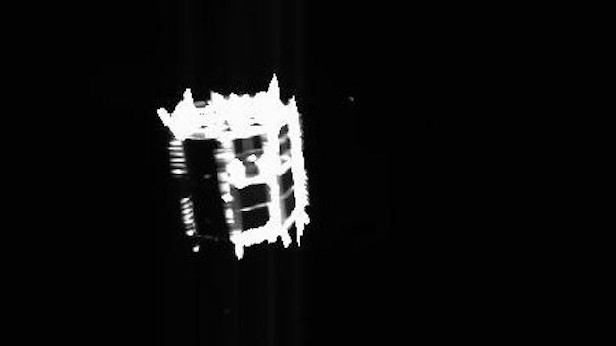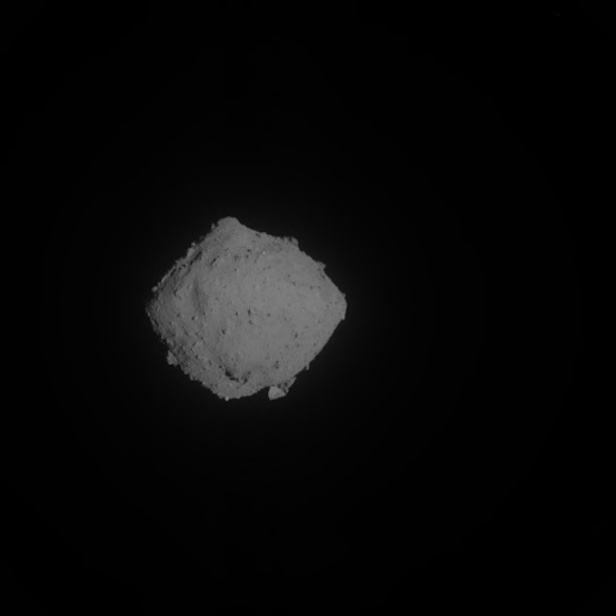Japan’s Hayabusa2 probe drops its last rover on asteroid Ryugu
The space probe has released its fourth, and final, rover onto the asteroid’s surface at a different height from the others

An image taken by the main Hayabusa2 spacecraft of the MINERVA-II2 rover during separation on 2 October 2019. Image credit: JAXA/Chiba Institute of Technology & collaborators
Japan’s asteroid mission has deployed its last rover to explore Ryugu’s rocky surface.
The Hayabusa2 spacecraft has been exploring the asteroid since June 2018, and it deployed three other landers to the asteroid’s surface last fall. Then, the mission switched its focus to sample collection. But now, Hayabusa2 is executing its last remaining task before turning for Earth: deploying its final rover, dubbed MINERVA-II2.
That process began on 2 October 2019 when the main spacecraft lowered itself to 1 kilometre (0.6 miles) above the asteroid’s surface to release MINERVA-II2. That’s much higher above the surface than its twins, MINERVA-II1A and MINERVA-II1B, were deployed, at about 50 metres (165 feet) above Ryugu’s surface.
The different approach is necessary because this rover is tackling different questions than its predecessors. The Hayabusa2 scientists want to be able to study the rover’s long, slow path down to Ryugu’s surface, with the main spacecraft watching its journey from an altitude of about 8-10 kilometres (5 miles). The lengthy descent will also let scientists more accurately study the gravitational field exerted by the asteroid.
MINERVA-II2 was expected to leave the main spacecraft travelling at a speed between 13 to 17 centimetres per second (5.1 and 6.7 inches per second). The separation manoeuvre took place at 11:57 p.m. EDT on 2 October 2019 (3 October 2019 at 03:57 a.m. GMT, or 12:57 a.m. local time at mission control in Japan).

An image taken by the Hayabusa2 spacecraft’s navigation camera during the MINERVA-II2 deployment procedure on 2 October 2019. Image credit: JAXA
Before the deployment occurred, Hayabusa2 dropped two target markers onto the asteroid in a rehearsal manoeuvre conducted on 16 September 2019. The MINERVA-II2 rover is expected to continue work until 9 October 2019.
The main Hayabusa2 spacecraft will turn to Earth before the end of this year, ferrying the sample container full of precious bits of Ryugu. That capsule will land in the deserts of South Australia late in 2020, giving scientists an opportunity to analyse the asteroid in terrestrial labs.
Need more space? You can get 5 issues of All About Space Magazine for just £5/€5/$5 for the latest amazing news from the final frontier!





